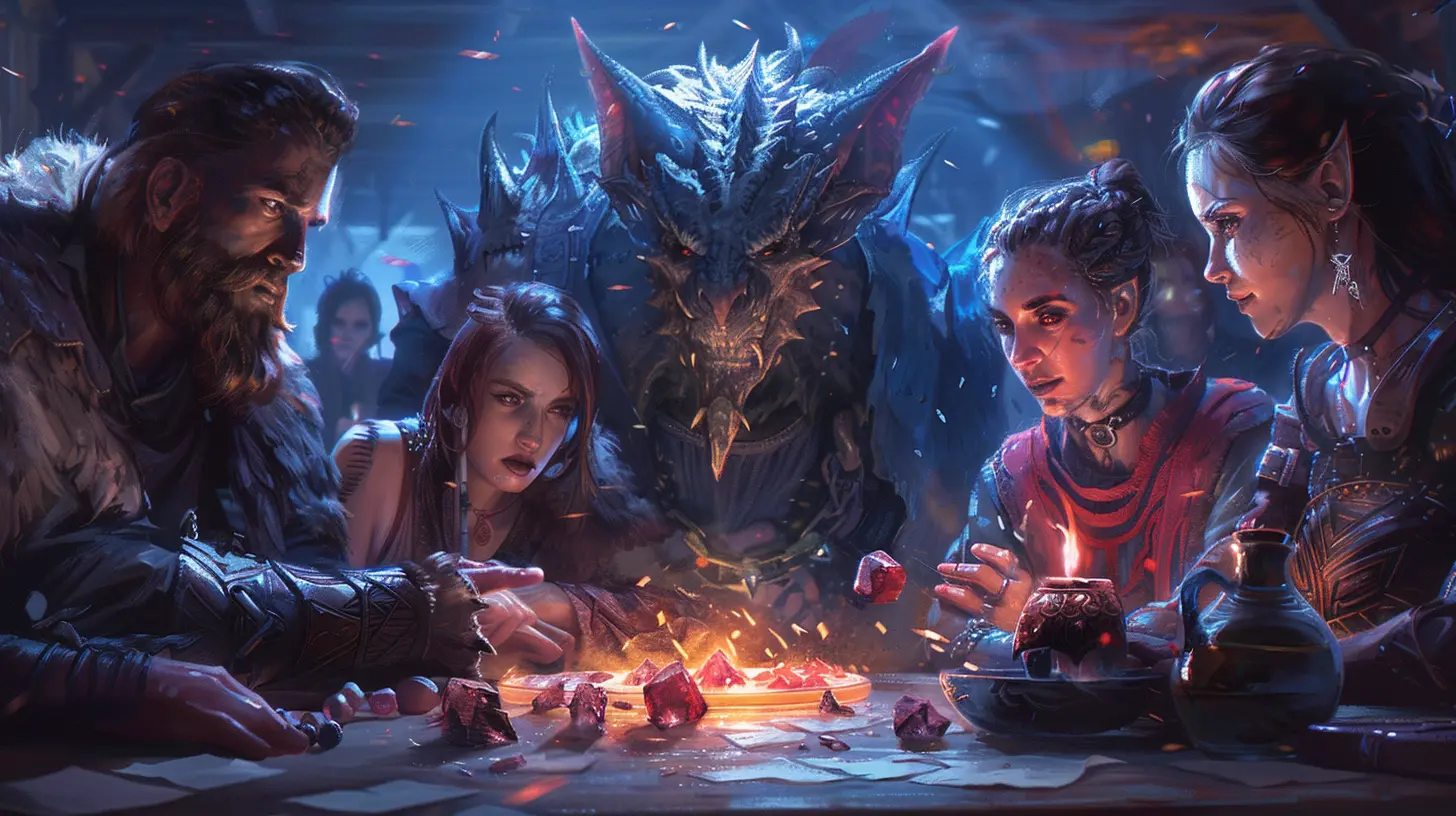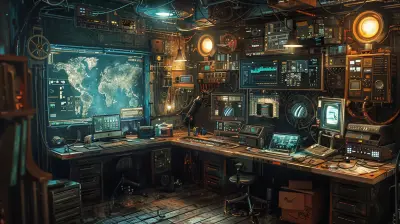When Should Developers Start Beta Testing Their Game?
16 September 2025
Game development is a wild ride, isn’t it? You start with a tiny idea and suddenly you’re knee-deep in code, art assets, and endless feature lists. It’s exciting, it’s stressful, and, let’s be honest, it’s downright chaotic at times. But somewhere in that whirlwind, a crucial question emerges:
When should developers start beta testing their game?
It's not just a scheduling issue—it can literally make or break how your game is received by players. Miss the mark, and suddenly you're drowning in bug reports after launch. Get the timing right, though, and you’ll not only polish your game but also build a community that’s rooting for you from day one.
So let’s dive into the when, why, and how of beta testing, and help you figure out the perfect moment to invite fresh eyes into your development process.
What Is Beta Testing Anyway?
Before we get into the nitty-gritty, let’s clear the air on what beta testing actually means.Beta testing is like handing your game to someone who’s never seen it before and saying, “Here, break this and tell me what sucks.” Sounds harsh, right? But that’s the point. You’ve been looking at this project for months—sometimes years. You’re too close to it. You need real-world players, with zero bias, to give it a proper shake.
There are typically two types:
- Closed Beta: A private test with a limited group of users, usually under NDA.
- Open Beta: A public release where pretty much anyone can sign up and test the game.
Each type serves a different purpose, and both are crucial at the right time.
Why Timing Matters So Much
Alright, so why are we even making a big deal about when to start beta testing?Because timing is everything. Start too early, and you risk turning off players with an unfinished, buggy mess. Wait too long, and you might not have enough time to address feedback before release.
Think of your game like a cake. If you stick a fork in it too early, all you get is goo. Wait too long, and it’s rock solid. The sweet spot? Right when it’s firm, but not fully baked — that’s when magic happens.
The Stages of Game Development and Where Beta Testing Fits
Let’s break it down stage by stage. Understanding where beta testing fits into your timeline is essential.1. Concept & Prototyping
At this stage, you’re experimenting. There’s no game yet—just ideas, sketches, and maybe a janky prototype that absolutely no one but your team should see.🔒 Beta Testing? Not Yet.
This is your sandbox. Play in it, mess around, fail often. No need for external testers just yet.
2. Pre-Alpha Stage
Now you’ve got something kinda playable. Basic mechanics are working, but half the features are still just bullet points in a doc.👀 Still Too Early for Beta Testing.
Test internally, fix obvious errors, and keep shaping your core gameplay loop. This is when close friends or team members can start giving opinions, but no outsiders yet.
3. Alpha Stage
Things are heating up! Most game features are implemented (even if they’re ugly), the main gameplay is functional, and you're transitioning from development hell to something that feels like a game.⚠️ Time to Start Thinking About Closed Beta Testing.
This is your golden window. You’ll want a small, controlled group of testers who understand the mission: help you find bugs, balance issues, and major design flaws.
This group is your lifeline—they’re going to catch the things you never even thought to test.
4. Beta Stage
Now stuff’s real. Your game has content, polish, and is almost feature-complete. You’re past the point of adding big new things and are mostly focused on refinement.🔥 Open Beta? Yes, Please.
This is prime-time for a broader test. You’ve got a stable build that can handle thousands of eyeballs, and now it's time to invite the world (or at least a chunk of it).
Feedback here is critical—performance issues, UI confusion, server crashes, balance tweaks—all of it starts pouring in. You can finally see how your game holds up under real-world stress.
Key Signs You’re Ready for Beta Testing
Still wondering whether you’re ready? Here are some crystal-clear signs it’s time to flip that beta switch:- 🚀 Your core gameplay is solid and fun.
- 🧪 Most major bugs have been squashed by internal testers.
- 🎮 The game is playable end-to-end (even if not 100% polished).
- 🧭 You’ve got clear testing goals (e.g., "Is the matchmaking working?").
- 💬 You’re ready—emotionally and technically—to hear what people really think.
If you're nodding along, congrats—you’re likely good to go.
The Dangers of Starting Too Early
Let’s pump the brakes for a second. Starting too soon can be risky.Imagine a player downloads your game during an early beta, but half the UI is broken, key features are missing, and performance is a trainwreck. What’s their first impression?
Probably something like:
“Wow, this game is garbage.”
Even if you fix every issue before launch, that first impression can linger. Worse, it might even spread—on Reddit, on YouTube, in reviews.
You only get one shot at a first impression. So make sure your game is ready to show some of its potential before bringing in the masses.
The Hidden Benefits of Beta Testing (Beyond Bugs)
Sure, beta testing helps you squash bugs and tweak gameplay. But there’s more.1. Building a Community
Early testers often become die-hard fans. They feel included in the process, and they become your megaphones—spreading the word, helping new players, and sticking by you through thick and thin.2. Real-World Hardware Testing
No matter how good your test rig is, someone out there will try to play your game on a 12-year-old toaster. And they’ll expect it to work.Beta testing gets you data from dozens—if not hundreds—of different hardware setups. That’s gold.
3. Feature Validation
Sometimes, what seemed like a genius idea in development just doesn’t land with players. Beta testing helps you validate features before you commit to them fully.Cutting a feature late in development is painful—but not as painful as launching with something nobody likes.
Tips for a Successful Beta Test
Okay, so you’re ready. But how do you make your beta test actually helpful?Here’s a quick checklist:
✅ Set Clear Objectives
Are you testing balance? Server load? Difficulty spikes? Make sure you communicate that to your testers.✅ Choose the Right Testers
For closed beta, pick a mix of casual players, hardcore gamers, and maybe even a few non-gamers. Each perspective brings something unique.✅ Provide Feedback Channels
Give your testers a place to talk—a Discord server, a feedback form, maybe even an in-game reporting tool.✅ Communicate Regularly
Let testers know what’s been fixed, what’s being worked on, and how their feedback is helping. Keep the loop going.How Long Should a Beta Test Last?
There’s no one-size-fits-all, but here’s a rough guide:- 🕐 Closed Beta: 2–4 weeks
- 🕐 Open Beta: 1–2 months
It depends on your scope. Some indie games need just a few weeks. Huge multiplayer games? Might take months. The key is: don’t rush, and don’t drag it out for too long either.
Post-Beta: What’s Next?
Here’s the part many devs skip—but shouldn’t.Once your beta is done and dusted, analyze everything. What did players love? What did they hate? What broke completely?
Now’s your chance to make meaningful changes before launch. Don’t ignore the feedback—this is what beta was for! Use it to refine, update, and improve.
And hey, maybe throw a thank-you gift to your testers. Even a digital badge or public shout-out can go a long way.
Final Thoughts
So... when should developers start beta testing their game?Not at the very beginning, and definitely not right before launch. You want to start when the game is already playable and mostly functional—but still early enough to make changes based on feedback.
Beta testing isn’t just about selecting a date on the calendar. It’s about choosing the right moment when your game—and your team—is ready to be seen, tested, and critiqued by real players. Done right, it’ll turn your good game into a great one, grow your community, and give you the confidence that you’re launching something players actually want to play.
And if you’re still unsure? Ask yourself this:
“If a total stranger played my game today, would they get the core experience I’m trying to deliver?”
If the answer is “yes,” then it's beta time.
all images in this post were generated using AI tools
Category:
Beta TestingAuthor:

Lucy Ross
Discussion
rate this article
1 comments
Lincoln McGhee
Developers should start beta testing when they finally realize their game is less 'masterpiece' and more 'masterpiece of chaos.' It's like showing your cooking to friends—better to let them taste the burnt edges before serving it at a dinner party!
September 25, 2025 at 2:35 PM

Lucy Ross
Great analogy! Starting beta testing early can provide valuable feedback, helping developers refine their game before the big launch.


